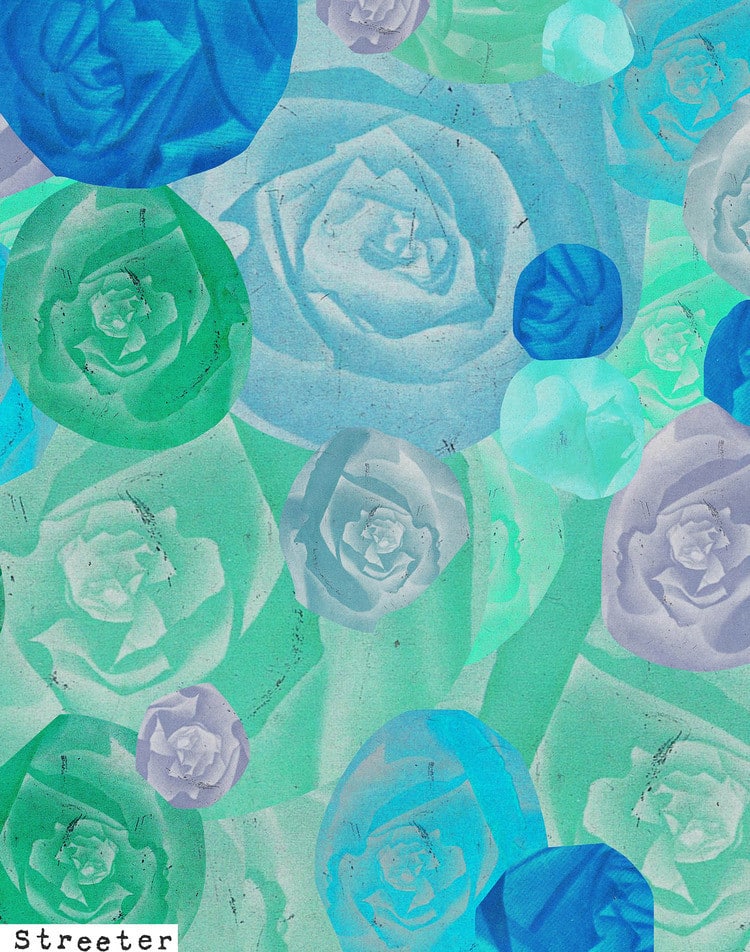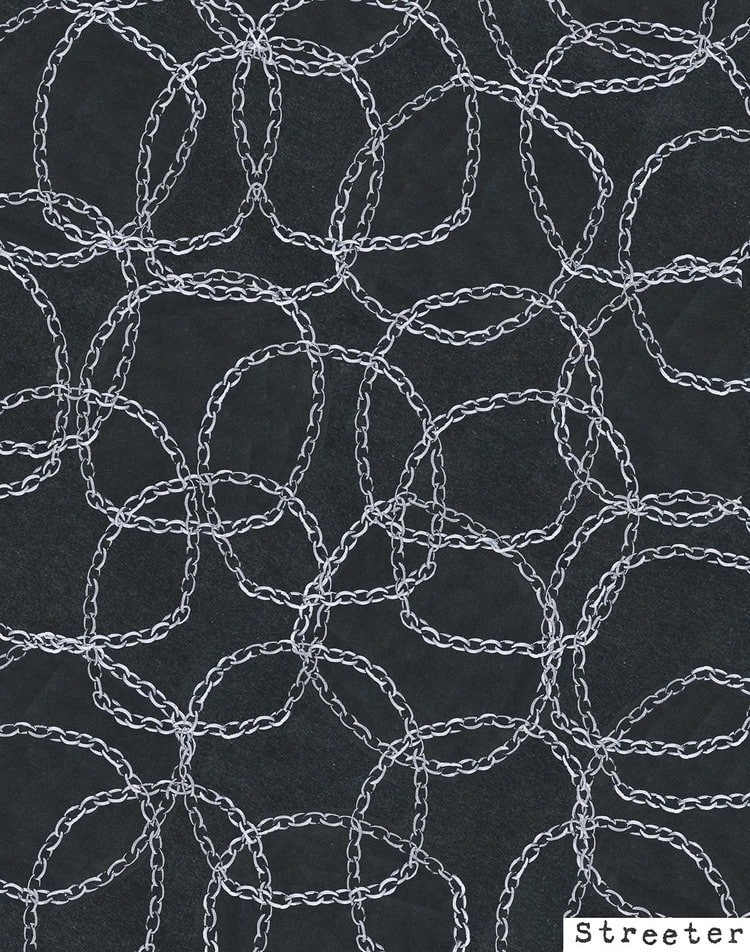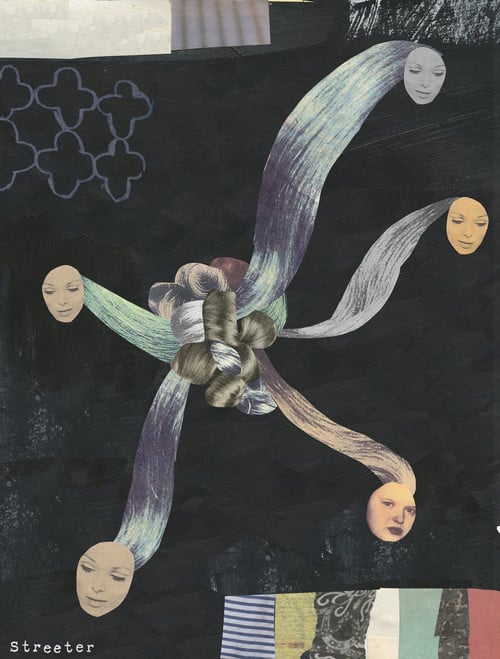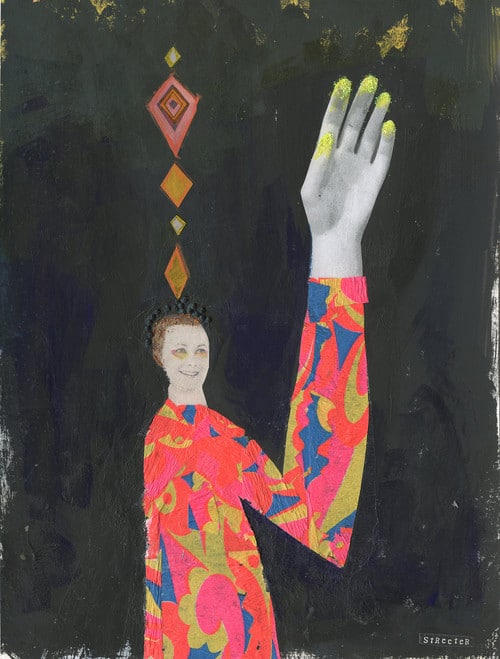Si lo haces bien, no hay inconveniente. ¿Estás de broma? Dibujo robots y naves espaciales y coches y camiones todo el día y de paso pago la hipoteca. ¿Qué puede no gustarte?
Aunque la relación con su arte y su carrera ha cambiado a lo largo de los años, Katherine Streeter dice que su amor y compromiso con su trabajo como ilustradora ha sido siempre la certeza más constante de su vida. "Ha habido muchos giros en el camino", admite. "El cambio es siempre un hecho en la vida. Por supuesto, eso también se aplica a la carrera y al estilo de vida. Trabajar por cuenta propia es arriesgado. Se adapta a algunas personalidades, pero desde luego no es para todo el mundo.
"Llevo mucho tiempo en esto", dice Streeter, "y a veces no puedo creer que siga sobreviviendo como autónomo; que el trabajo haya sido lo bastante estable como para pagar el alquiler todos estos años".
Aquí tienes sus consejos para trabajar como ilustradora autónoma:
Sé optimista
A lo largo de los años, Streeter se ha enfrentado a algunas ansiedades habituales de la vida de autónomo: el fracaso y el rechazo, vivir al límite de la seguridad y asumir riesgos.
"Es más fácil arriesgarse a los veinte que a los cuarenta, pero en este trabajo siempre hay riesgos", señala. "Así que me doy cuenta de que debo ser quien soy y de que quizá una situación completamente segura me aburriría. Quizá eso cambie más adelante. Estaré abierta a ello si es así; pero por ahora, sigo obteniendo grandes satisfacciones de este trabajo y sigo siendo optimista."
Streeter sostiene que esto es fundamental: debes ser optimista y creer que hay un lugar para tu trabajo, en algún sitio.
"Si eres pesimista, el camino hacia adelante será oscuro, porque siempre habrá rechazo", dice. "El porcentaje de trabajos que salen de un bombazo promocional suele ser bajo. Hay encargos matados y conceptos criticados. Pero todo esto es como debe ser; así funciona la industria".


Encuentra el equilibrio
Streeter cree que el fracaso permite a una persona crecer, en la vida y en el arte. "Aquí es donde entra el optimismo", dice. "Ante el fracaso, es difícil verlo como algo positivo, pero si permites que te enseñe algo, entonces te haces más fuerte.
"Mi estudio está lleno de montones y montones de arte de años", dice Streeter. "A veces pienso que debería apilarlo todo en una hoguera y dejarlo ir, pero a veces me gusta mirar atrás y rebuscar entre los montones. Son recordatorios de mi viaje con estilo y oficio. Y puedo ver objetivamente mi propio crecimiento creativo de una forma que es imposible presenciar en el momento.
"En una pila de 100 piezas, puede haber dos o tres que parezcan dignas. La pila está llena de intentos fallidos, pero cada pieza fallida me acercó mucho más a las que ganaron premios".
"Para mí ha sido saludable mantener mi propio trabajo todo el tiempo", afirma Streeter. "Mis proyectos paralelos personales me permiten sentirme equilibrada para que todo mi corazón y mi alma no vayan al trabajo comercial (si fuera así, probablemente me tomaría el rechazo con mucha más dureza)".
Para Streeter, el fracaso está más en sus entrañas que en su cabeza. Puede que entienda lógicamente que algo funciona en el contexto en el que está -es decir, hay piezas que se eligen o se aceptan o se imprimen-, pero en su mente es "esto podría haber sido mejor" o "ojalá se hubiera elegido otro concepto que propuse".
Aun así, vive con ello y sigue adelante. "El trabajo que hago y que más se parece a mí es el que hago desde mis entrañas", dice Streeter. "Cuando experimento fuera de mis trabajos de ilustración, me permito volver a mi verdadera voz. A veces pierdo [esa verdadera voz] si estoy demasiado preocupada por crear una pieza que encaje en el encargo, si la atención se centra únicamente en resolver el problema o en crear algo para complacer al director artístico. Estas cosas son importantes, por supuesto, pero si pierdo mi propia visión, para mí es una obra fallida. Cuando esto ocurre, me recuerda que debo mantener el equilibrio entre mi trabajo personal y mi trabajo comercial que he mencionado anteriormente.
"Cada uno debe encontrar su equilibrio. Para algunos, la ilustración lo es todo, su enfoque total y su supervivencia; y para otros, es un trabajo a tiempo parcial y pueden elegir las tareas que mejor se adapten a su horario o interés."


Déjate llevar
"¿Cambios? Suelo aceptarlos", dice Streeter. "De todos modos, me pongo inquieto cuando las cosas permanecen igual demasiado tiempo. Ojalá el objetivo sea seguir cambiando para mejor, pero el trabajo autónomo es una montaña rusa, y a veces hay cambios que ocurren para peor. La economía sube y baja; los presupuestos varían; el diseño y las tendencias cambian, y los intereses del público cambian. Existe el miedo a que muera la impresión. Los directores artísticos cambian de trabajo.
"Y una persona cambia. La mayoría de las personas que crean crecerán a medida que realicen obras a lo largo de muchos años. Encajar en un lugar a medida que cambia el trabajo de uno es lo ideal, pero a veces hay rachas de crecimiento incómodas en las que no hay ningún lugar en el que encajar. No pasa nada, eso también cambiará".
Mira el panorama general
"La distracción siempre está ahí", dice Streeter, "los bonitos días soleados; los horarios de los niños y la familia; las obligaciones de la vida y los problemas personales; los momentos oscuros (y luminosos); el flujo constante de las redes sociales. Es un reto mantener la concentración, pero un ejercicio para mantenerla bajo control".


Valora tus plazos
"Las tareas me dan un sentido de propósito más que los proyectos personales", dice Streeter. "Las tareas también me dan una fecha límite, que es algo con lo que trabajo bien.
"El proceso de iluminación es poderoso e importante, sobre todo cuando se empieza", dice Streeter, "pero no es para todo el mundo. Es importante seguir intentándolo hasta que encuentres lo que mejor se te da".
"Estoy más contenta cuando produzco algo, aunque sea un álbum de recortes de regalo para mi hermana. Soy feliz cuando soy creativa. Si puedo pasar al menos parte de cada día haciendo o planeando algo creativo, entonces estoy equilibrada.
"Pero para mí es más un reto ceñirme a los plazos de mis propios proyectos, que nunca están realmente establecidos, porque quiero que mi trabajo personal respire y cambie según lo necesite. Esto ocurre más cuando los proyectos están libres de limitaciones y límites".
Extraído con permiso de Iniciar tu carrera como ilustrador por Michael Fleishman. Copyright 2016, Allworth Press, un sello de Skyhorse Publishing, Inc.
Ilustraciones de Katherine Streeter. Ver más en cartera de ilustraciones en www.katherinestreeter.com.












